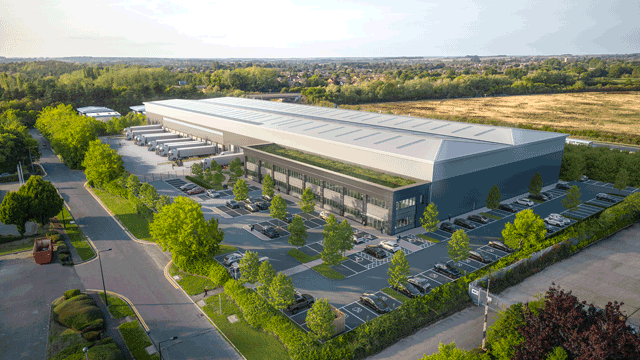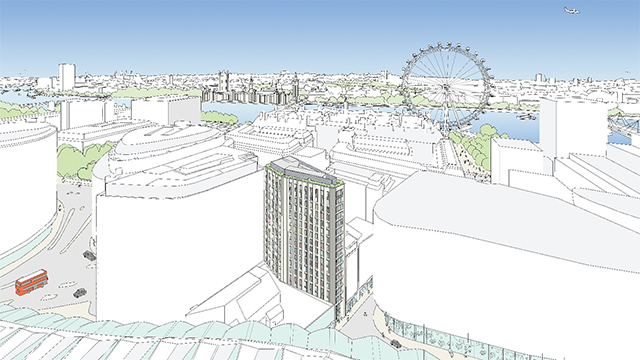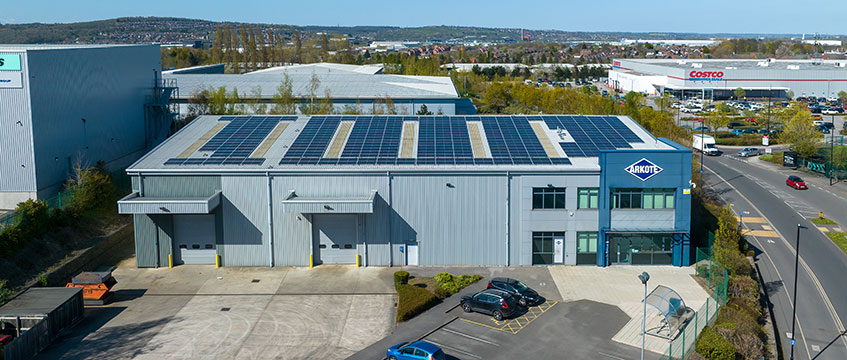Jen Lemen discusses eight things you should know about the development phase, as an APC candidate.
The RICS has defined the real estate lifecycle as shown in the diagram below. The development phase covers the design brief, procurement, design and construction.
Planning and development candidates are likely to be involved in the first three of these, identifying and acquiring the residential development land, agreeing the client’s brief, procuring the professional team (and potentially also the construction team, with the input of other professionals) and providing input into design. The design work itself will typically be undertaken by an architect or other design professional, unless a design and build contract is being used.
After this, the construction stage begins and the bulk of the work is typically transferred to other professionals, such as a quantity surveyor, project manager and/or building surveyor. These roles are also likely to input into tendering, procurement, agreement of contracts, cost planning and management, contract administration, and project management.
Here we are looking specifically at the initial phases of residential development, including land identification, acquisition and due diligence. This will be ideal reading for planning and development candidates, as well as those involved with land and resources, residential and valuation. The principles are also applicable if you are a commercial real estate candidate acquiring a development site for a client.
RICS’ real estate lifecycle

The broad RICS phases align with the RIBA Plan of Work 2020, with phases 0-4 covering the pre-construction stages. These include 0: Strategic definition, 1: Preparation and briefing, 2: Concept design, 3: Spatial co-ordination and 4: Technical design.
Key questions to answer
Here are eight questions from an imaginary client and factors you should consider when giving reasoned advice.
1. I want to build three new houses on the edge of a small rural village. Help.
The first issue that springs to mind is planning potential, let alone the availability of land. Advise your client that a review of planning policy is the first diligent step. This will allow you to consider whether current policy would permit residential development on a potentially green belt site.
If a site has already been identified, check the planning history of the site itself and any similar surrounding plots. If consent has been refused, why? And does this mean that residential development may be unviable? If policy suggests planning may be achievable, this is great news.
2. Which site should I buy?
This is a very broad question and one that starts with defining your client’s brief. Setting out a clear brief, potentially alongside your client’s architect (if instructed at this stage), will help you to explore opportunities that fit their brief and would be viable in planning and financial terms.
After you have defined the brief, you should have a much clearer idea of what your client needs from the finished scheme. This could include meeting specific financial hurdles, ESG credentials, accessibility requirements or a design that is in-keeping with local architecture.
If the client does not already have a site in mind, it is time to get searching for one. There are many ways to do this: letter drops; speaking to local residents; using online portals and the Land Registry; and driving by the site and around the local area. Not all good development sites will be easy to find, especially using the most popular online availability portals. Often, off-market sites are where real value can be found.
3. How can I assess the financial viability of a site?
Prepare a development appraisal. This will allow you to look at the value of the completed scheme (gross development value, or GDV), the costs of the scheme (input costs) and the purchase price, and how they affect the overall probability of the scheme. Ensure you understand from your client what this output metric should be, based on their brief.
You can prepare a simple development appraisal at the outset, using industry standard inputs, which can be refined as you obtain more detail and certainty over the project. The RICS produces excellent guidance on this in the Valuation of Development Land professional standard.
4. How do I gauge sentiment of the neighbours and local community towards my proposed development scheme?
Speak to the neighbours and consult with the local community. The extent of this will depend on the size of the project. For a single dwelling, it could simply mean speaking to the neighbours, whereas for a larger scheme it will probably require a public event (consultation) and distribution of information about the scheme to local residents and businesses. Feedback can then be captured to inform the eventual scheme and planning application. More contentious schemes will require far more work on this aspect of the development process.
5. How can I manage risk for my client at this stage of the project?
Risk management should always be on your mind. For example, planning risk could be managed by acquiring a site with planning consent in place, even if you need to amend it post-acquisition. Otherwise, pre-application advice from the local planning authority could confirm the principle of development.
Risk also relates to financial elements of the project: rising build costs, interest rates and the initial site price. There are also often unknown costs (dealt with through a contingency of 5%-10%+), such as ground conditions and existing structures (eg asbestos removal).
Comprehensive due diligence to identify, manage and/or mitigate potential risks will help control costs. A risk register is a good starting point, as well as ongoing liaison with your client and the wider professional team.
6. What site-specific risks do I need to take into account?
There are many site-specific risks that you will need to carry out due diligence into. These include: ground conditions and subsoil (using a geology map); coal mining; tree preservation orders; radon; services (what is existing, where are they located, do they need to be moved and do we need any new services brought to site?); access (for residents of the completed scheme and for construction traffic); rights of way; contamination; listed buildings, conservation areas and other site-specific designations.
This is by no means exhaustive and due diligence requirements will be defined by the scheme site in question. The more information you can gather early on and advise your client on, the more you can reduce risk and increase the chance of project success.
7. The design team wants to build something that is completely in contrast to my client’s priorities of cost and speed. What should I do?
This is where excellent communication skills come into play. Your input as a planning and development surveyor into the initial stages of the project are vital, first by acquiring a potentially viable site and then providing input into the planning and design stages.
Being involved with the wider professional team will help you to manage risk and provide advice on potential issues and opportunities.
If you suspect that the design is going to be unviable or there are aspects that will not work with your own assessment of risk, then speak up and provide reasoned advice to your client to make good decisions.
8. What needs to be submitted as part of a planning application?
Mandatory requirements are split into national and local levels. The online planning portal will explain what needs to be submitted.
As a minimum at national level, you must include the application form, a location and site plan (adhering to specific requirements and scales), ownership certificate (check if this is A, B, C or D), agricultural holdings certificate and the fee. You may also need a design and access statement and fire statement. Each local planning authority will then set out their own requirements for an application to be valid. Ensure you check and comply with them.
Preparation is everything
The eight above points are only the tip of the iceberg when it comes to the role and responsibilities of the planning and development surveyor. What are the most important issues for you when advising a client? How do you overcome them? Being prepared and knowing about the risks and rewards early on will help to boost project success, so be aware that you will do a lot of work without much physical progress being seen at first.
Jen Lemen BSc (Hons) FRICS is a co-founder and partner of Property Elite











